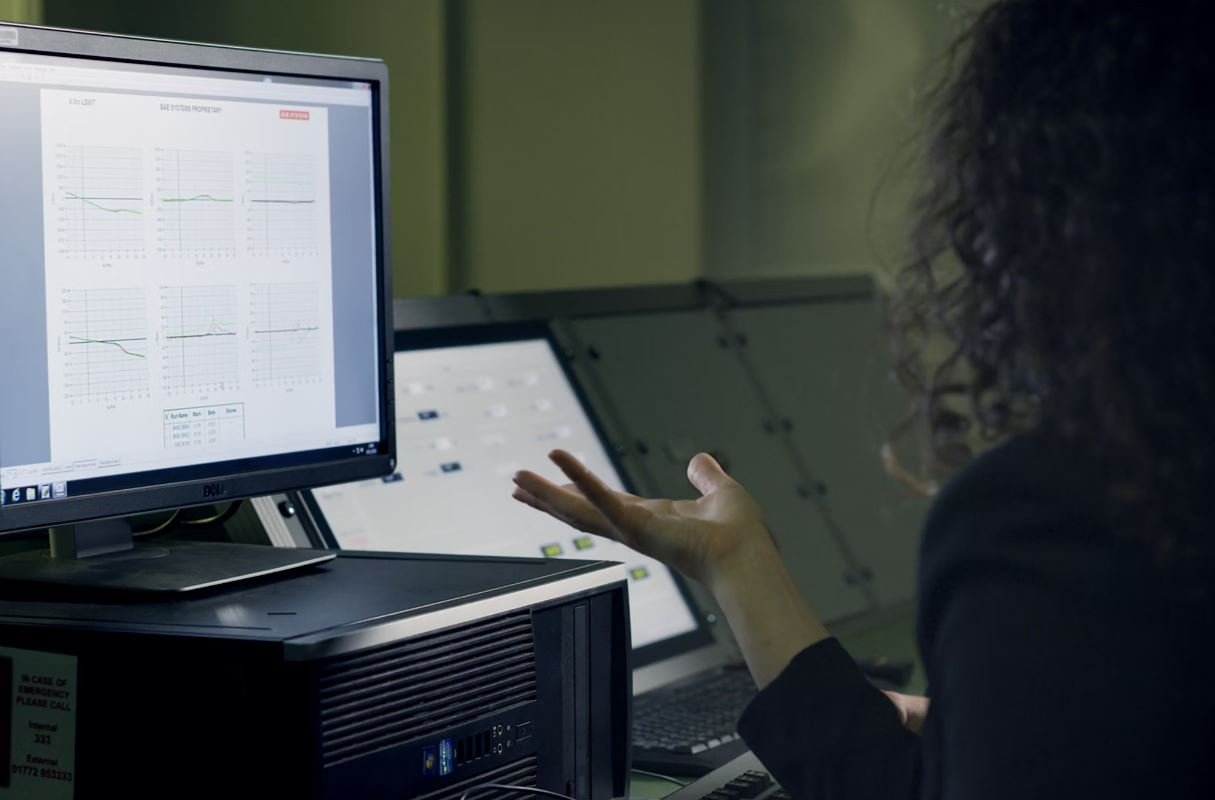Best Portrait Prompts
Creating captivating portraits requires more than just technical skill – it also requires creativity and the ability to engage with your subject. If you’re looking for inspiration and new ideas for your portrait photography, here are some of the best prompts to help you capture stunning images that tell a story.
Key Takeaways
- Portrait prompts are essential for capturing compelling images.
- The right prompt can bring out genuine emotions and expressions in your subjects.
- Experimenting with different prompts can help diversify your portfolio.
1. Emphasize Natural Poses
Encourage your subjects to relax and pose naturally. **Avoid rigid or forced positions**. By capturing your subject in a relaxed state, you can create authentic and genuine portraits. *The best moments are often captured when the subject least expects it, resulting in natural and candid shots*.
2. Incorporate Props
Adding props to your portrait sessions can bring a sense of context and narrative to your images. *A carefully chosen prop can enhance the story and evoke emotions*. Consider using items that reflect your subject’s personality or interests to create more personalized and meaningful portraits.
3. Explore Unique Locations
Instead of sticking to conventional studio settings, **venture outdoors or find unconventional indoor locations** that add an interesting backdrop to your portraits. *Exploring new locations can add depth and visual interest to your images, making them stand out from the crowd*.
4. Focus on Expressions
Expressions are the gateway to emotion and authenticity in portrait photography. **Encourage your subject to express a range of emotions**, capturing both joyous and reflective moments. *A genuine smile or contemplative gaze can convey powerful messages and create captivating portraits*.
Table 1: Popular Portrait Prompts
| Prompt | Description |
|---|---|
| Silhouette | Create dramatic portraits using only the subject’s outline. |
| Reflections | Utilize reflective surfaces to add visual interest and complexity. |
| Close-Up | Focus on capturing intricate details and facial expressions. |
5. Play with Lighting
Lighting plays a crucial role in portrait photography. **Experiment with different lighting techniques** to create unique moods and enhance the visual impact of your images. *Contrasting shadows or soft, diffused lighting can create striking portraits with depth and dimension*.
6. Capture Candid Moments
Some of the most powerful portraits are taken when the subject is unaware of the camera. **Document candid moments that showcase true emotions** and genuine interactions. *These fleeting moments often make for captivating and emotional portraits*.
Table 2: Lighting Techniques
| Technique | Description |
|---|---|
| Rembrandt Lighting | Creates a triangle-shaped illumination on one side of the face |
| Butterfly Lighting | Places the main light source above and directly in front of the subject, creating a butterfly-shaped shadow under the nose |
| Rim Lighting | Positions the light behind the subject, creating a rim of light around their outline |
7. Collaborate with Your Subject
Engage with your subject throughout the process to create a collaborative and comfortable atmosphere. **Listen to their ideas and incorporate their input into the shoot**. *This collaboration fosters trust and creativity, resulting in portraits that truly represent the subject’s personality and story*.
8. Experiment with Unconventional Angles
Break away from traditional portrait angles and perspectives. **Explore unique viewpoints and compositions** to add a fresh and unexpected twist to your images. *An unconventional angle can create a sense of intrigue and individuality in your portraits*.
Table 3: Favorite Portrait Locations
| Location | Description |
|---|---|
| Abandoned Buildings | Offer a gritty and mysterious atmosphere for edgier portraits. |
| Nature Settings | Provide a beautiful backdrop with vibrant colors and textures. |
| Urban Landscapes | Offer an interesting contrast with modern architecture and cityscapes. |
Incorporating these portrait prompts into your photography sessions will enable you to capture unique and compelling images that reflect the personality, emotions, and story of your subject. **Experimentation and creativity are key** in portrait photography, so don’t be afraid to step outside your comfort zone and try new ideas. Challenge yourself to push the boundaries and create portraits that leave a lasting impact.

Common Misconceptions
Misconception 1: The best portraits can only be taken with expensive equipment.
One common misconception around portrait photography is that only professional photographers with expensive equipment can capture the best portraits. However, this is not entirely true. While high-end cameras and lenses can certainly enhance the quality of the images, a skilled photographer can still create stunning portraits with a basic camera setup. It’s more about the photographer’s understanding of composition, lighting, and subject interaction than the equipment itself.
- Composition and framing play a crucial role in creating a visually pleasing portrait.
- Understanding and manipulating lighting conditions can greatly enhance the mood and overall impact of the portrait.
- Focusing on capturing the subject’s personality, emotions, and unique features can often result in more powerful and engaging portraits.
Misconception 2: Portraits should always have a serious or stoic expression.
Another common misconception is that portraits should always have a serious or stoic expression. While traditional portraits might often convey a sense of seriousness, contemporary portrait photography allows for more versatility and creativity. Portraits can capture a range of emotions, from joy and laughter to vulnerability and playfulness. It’s important for photographers and subjects alike to embrace the diversity of emotions and explore various expressions to create more dynamic and engaging portraits.
- Experimenting with different expressions can add depth and storytelling elements to the portrait.
- Capturing candid moments and genuine laughter can create more lively and authentic portraits.
- Encouraging subjects to be themselves and express their true emotions can result in more compelling and relatable portraits.
Misconception 3: Only professional models can have a successful portrait session.
Some people believe that portraits are only successful when taken with professional models who have extensive experience in front of the camera. However, this is not a necessary requirement. Skilled photographers can bring out the best in any subject, regardless of their modeling experience. Portraits can be successful with everyday people, capturing their unique personalities, stories, and beauty in an authentic and relatable way.
- A good portrait photographer knows how to make their subjects feel comfortable and at ease during the session.
- Directing subjects and providing clear instructions can help bring out their best features and expressions.
- Celebrating individuality and embracing imperfections can lead to more memorable and meaningful portraits.
Misconception 4: Good portraits require elaborate and professional studio setups.
Many people wrongly assume that to create good portraits, it is essential to have a fully equipped professional studio with elaborate lighting setups. While studios can offer control over lighting and composition, portrait photography can be successfully pursued in various settings, including natural outdoor environments or minimal indoor spaces. The key is understanding how to work with available light and using the surroundings to complement the subject.
- Utilizing natural light can create soft and flattering illumination for portraits.
- Exploring outdoor locations can provide a unique backdrop that adds context and interest to the portraits.
- Simple setups with a single light source or even using available artificial lighting at home can yield beautiful and creative results.
Misconception 5: The subject’s physical appearance is the most important factor in a portrait.
One prevalent misconception is that the physical appearance of the subject is the most crucial factor in determining the success of a portrait. While appearance certainly plays a role, a great portrait goes beyond surface-level appearance to capture the essence of the individual. It is the photographer’s ability to connect with the subject, evoke genuine emotions, and showcase their unique qualities that truly makes a portrait stand out.
- Focusing on capturing the subject’s personality and character can create more meaningful portraits.
- Highlighting interesting details or attributes can add depth and intrigue to the portrait.
- Creating a comfortable and supportive environment during the session can help the subject feel confident and allow their true selves to shine through.

Best Portrait Prompts
Portrait photography is a captivating art form that allows photographers to capture the essence and emotion of their subjects. Whether it’s a professional shoot, a candid moment, or a self-portrait, the right prompts can make all the difference in creating a stunning portrait. In this article, we explore 10 unique and engaging prompts that are sure to inspire beautiful portraits. Each table below highlights a different prompt and provides additional information and context.
1. Expressive Gestures
Expressive gestures can add depth and emotion to a portrait. This prompt encourages the subject to convey their feelings through their body language and hand movements.
| Gesture | Emotion | Example |
|---|---|---|
| Hands on face | Vulnerability |  |
| Hands extended | Openness |  |
| Fingers crossed | Hope |  |
2. Natural Surroundings
Integrating natural surroundings into a portrait can add a sense of authenticity and connection. This table explores different natural elements that can be incorporated in a portrait shoot.
| Environment | Effect | Example |
|---|---|---|
| Flower field | Serenity |  |
| Beach | Carefree |  |
| Urban street | Gritty |  |
3. Dramatic Lighting
Playing with lighting techniques can create stunning and dramatic portraits. This prompt focuses on various lighting setups and their effects.
| Lighting Setup | Effect | Example |
|---|---|---|
| Backlighting | Halo effect |  |
| Rembrandt lighting | Mysterious shadows |  |
| Split lighting | Dramatic contrast |  |
4. Colorful Props
Incorporating colorful props in portraits can add vibrancy and playfulness. This table presents different prop ideas and their impact on the overall composition.
| Prop | Effect | Example |
|---|---|---|
| Balloons | Joy and celebration |  |
| Bubblegum | Fun and youthful |  |
| Umbrella | Playful and whimsical |  |
5. Reflections
Reflections can add a layer of depth and intrigue to a portrait. This prompt explores different ways to incorporate reflections in portrait photography.
| Reflection Element | Effect | Example |
|---|---|---|
| Mirror | Duality |  |
| Water | Serenity and tranquility |  |
| Glass | Mystery and distortion |  |
6. Unique Perspectives
Capturing portraits from unique angles and perspectives can create visually compelling images. This table explores different perspectives to consider in portrait photography.
| Perspective | Effect | Example |
|---|---|---|
| From above | Vulnerability and intimacy |  |
| Low angle | Dominance and power |  |
| Profile view | Mystery and introspection |  |
7. Cultural Context
Exploring a subject’s cultural background can add meaningful context to a portrait. This table showcases different cultural elements that can enhance a portrait.
| Cultural Element | Effect | Example |
|---|---|---|
| Traditional clothing | Identity and heritage |  |
| Tribal accessories | Authenticity and connection |  |
| Cultural symbols | Pride and symbolism |  |
8. Storytelling
Creating a narrative within a portrait can evoke curiosity and engagement. This table suggests different storytelling concepts in portrait photography.
| Story Concept | Effect | Example |
|---|---|---|
| Mysterious stranger | Intrigue and wonder |  |
| Adventure seeker | Fearlessness and wanderlust |  |
| Metamorphosis | Transformation and growth |  |
9. Emotive Eyes
The eyes are often referred to as the windows to the soul. This prompt focuses on capturing compelling expressions and emotions through the eyes.
| Eye Emotion | Effect | Example |
|---|---|---|
| Amazement | Wonder and astonishment |  |
| Mischievousness | Playfulness and curiosity |  |
| Intimacy | Connection and vulnerability |  |
10. Frame within a Frame
Using a frame within the composition can draw attention to the subject and add depth. This table explores different framing elements in portrait photography.
| Framing Element | Effect | Example |
|---|---|---|
| Doorway | Transition and passage |  |
| Foliage | Natural framing and connection |  |
| Architectural elements | Structure and symmetry |  |
With these 10 captivating portrait prompts, photographers can unlock their creativity and produce stunning and meaningful portraits. Whether it’s through expressive gestures, unique perspectives, or exploring cultural contexts, these prompts provide endless possibilities for capturing the human spirit.
Frequently Asked Questions
Q: What are some good portrait prompts for a photoshoot?
A: There are numerous portrait prompts that can evoke emotions and create engaging photographs. Some popular options include:
- 1. Environmental portraits: Encourage the subject to showcase their personality and interests in a location that holds meaning to them.
- 2. Candid moments: Capture natural interactions and emotions by asking the subjects to engage with each other or participate in an activity.
- 3. Classical poses: Experiment with traditional poses and compositions to create timeless and elegant portraits.
- 4. Storytelling: Ask the subjects to portray a specific emotion or narrative through their expressions and body language.
- 5. Self-reflection: Encourage the subjects to think about their personal journey and capture their authentic selves.
Q: How can I make my subject feel comfortable during a portrait photoshoot?
A: Creating a comfortable environment for your subject will help them relax and bring out their natural expressions. Here are some tips to achieve this:
- 1. Communicate: Establish open and friendly communication with your subject before and during the shoot. Discuss their preferences and be responsive to their needs.
- 2. Encourage conversation: Engage in lighthearted conversations that put your subject at ease and distract them from the pressure of being photographed.
- 3. Provide direction: Give clear instructions on poses and expressions, guiding your subject to feel confident and comfortable in front of the camera.
- 4. Practice active listening: Attend to any concerns or anxieties your subject may express, and address them respectfully and empathetically.
- 5. Take breaks: Allow short breaks for your subject to relax and recharge, ensuring they do not feel overwhelmed during the photoshoot.
Q: What are some creative portrait ideas for indoor photography?
A: Indoor photography offers a variety of opportunities to capture unique and artistic portraits. Consider trying the following ideas:
- 1. Silhouette portraits: Take advantage of natural light coming through windows or use artificial lighting to create striking silhouettes against a plain background.
- 2. Double exposures: Combine portraits with interesting textures or patterns to create visually captivating double exposure images.
- 3. Reflections: Experiment with photographing your subject’s reflection in windows, mirrors, or other reflective surfaces.
- 4. Low-key lighting: Utilize dramatic lighting techniques to create moody and mysterious portraits.
- 5. Props and backdrops: Incorporate unique props and backdrops such as vintage furniture, colorful fabrics, or interesting wall textures to enhance the visual appeal of the portraits.
Q: How can I capture authentic expressions in portrait photography?
A: Authentic expressions are crucial in capturing meaningful portraits. Here are some tips to achieve this:
- 1. Establish rapport: Spend time getting to know your subject, building a connection that allows them to feel comfortable and open up.
- 2. Engage in conversation: Talk to your subject about their interests, passions, or life experiences to evoke genuine emotions during the shoot.
- 3. Prompt spontaneous reactions: Use humor, surprises, or thought-provoking questions to elicit authentic expressions and behaviors.
- 4. Be patient: Allow your subject to relax and let their guard down, capturing the moments when authenticity shines through.
- 5. Pay attention to details: Observe subtle changes in the subject’s face and body language, capturing fleeting moments of true emotion.
Q: What are some effective ways to pose a subject in portrait photography?
A: Posing a subject can greatly impact the overall feel and aesthetics of a portrait. Consider the following posing techniques:
- 1. Natural poses: Encourage your subject to relax and find a comfortable stance, capturing them in a natural and unforced pose.
- 2. Framing: Utilize doorways, windows, or other architectural elements to create visually appealing frames around your subject.
- 3. Leading lines: Incorporate leading lines from the environment to guide the viewer’s attention towards the subject.
- 4. Use props: Props can add interest and variety to a portrait. Experiment with different objects that complement the subject.
- 5. Dynamic movements: Prompt your subject to move, jump, or twirl to capture energetic and lively portraits.
Q: How can I achieve proper lighting for portrait photography?
A: Proper lighting plays a vital role in creating captivating portraits. Here are some lighting techniques to consider:
- 1. Natural light: Utilize soft and diffused natural light by shooting during the golden hour or positioning your subject near windows or in shaded areas.
- 2. Artificial lighting: Experiment with different types of artificial lighting, such as strobes or continuous lights, to create desired effects.
- 3. Reflectors: Use reflectors to bounce and redirect light, filling in shadows and creating a more balanced exposure.
- 4. Rim lighting: Position a light source behind the subject to create a rim of light around their outline, adding depth and separation from the background.
- 5. Rembrandt lighting: Achieve a classic portrait look by positioning the light source at a 45-degree angle to the subject, creating a triangle of light under one eye.
Q: What are some effective editing techniques for portrait photography?
A: Editing can enhance the mood and aesthetics of your portrait photographs. Consider the following techniques:
- 1. Color grading: Adjust the color tones in your portraits to create a cohesive and visually pleasing color palette.
- 2. Skin retouching: Refine the skin texture and tone using techniques such as frequency separation or dodge and burn tools.
- 3. Selective adjustments: Use masking or selection tools to make targeted adjustments to specific areas of the portrait, enhancing details or correcting exposure.
- 4. Enhancing eyes: Bring out the natural beauty of the eyes by enhancing their color, sharpness, and brightness.
- 5. Creative effects: Experiment with artistic filters, overlays, or textures to add a unique touch to your portraits.
Q: How can I develop my own unique style in portrait photography?
A: Developing a distinct style in portrait photography takes time and experimentation. Here are some tips to help you find your own unique style:
- 1. Study and analyze: Explore the works of various photographers to identify elements that resonate with you and inspire your creativity.
- 2. Experiment with different techniques: Try different lighting setups, compositions, editing styles, and subject genres to discover what you enjoy the most.
- 3. Trust your instincts: Follow your gut feeling and intuition to create portraits that reflect your artistic vision and personal preferences.
- 4. Consistency and authenticity: Aim to develop a consistent style that is authentic to you, showcasing your unique perspective and visual storytelling.
- 5. Evolve and refine: Continuously learn and adapt to new trends and techniques while staying true to your core style. Embrace growth and allow your style to evolve organically.
Q: What camera and lens setup is recommended for portrait photography?
A: While your choice of camera and lens ultimately depends on personal preference and budget, here are some recommendations commonly used in portrait photography:
- 1. Full-frame DSLR or mirrorless camera: These cameras provide excellent image quality, dynamic range, and low-light capabilities.
- 2. Prime lenses: Opt for a fast prime lens in the range of 50mm to 85mm for capturing portraits with a shallow depth of field and pleasing bokeh.
- 3. Telephoto lens: Consider a longer focal length lens, such as a 70-200mm, for capturing close-up portraits from a distance and achieving a compressed background.
- 4. Lens with wide aperture: Look for lenses with wide maximum apertures, like f/1.4 or f/1.8, to allow for better low-light performance and creative depth of field control.
- 5. Consider your budget and shooting style: Ultimately, choose equipment that aligns with your shooting preferences and budget. Renting different gear before investing can also be a good option.




